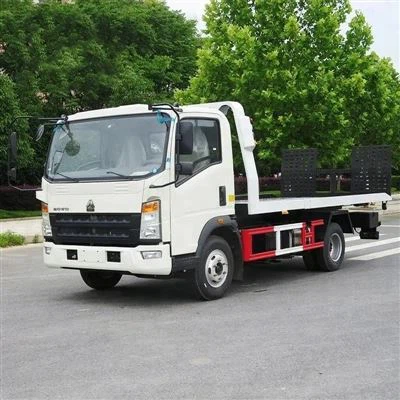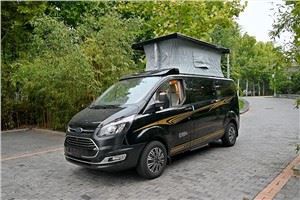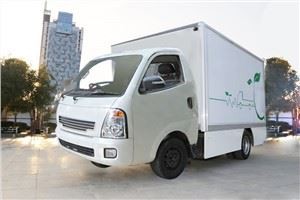Understanding Waste Compactor Parts: A Comprehensive Guide

In today’s waste management industry, waste compactors have become essential for businesses seeking efficient waste disposal solutions. Understanding the various parts of a waste compactor is crucial for optimal performance, maintenance, and longevity. In this article, we will delve deep into the different components of waste compactors, troubleshooting tips, and recommended practices to enhance their operation. This guide aims to empower readers with knowledge to make informed decisions regarding waste compactor parts.
The Importance of Waste Compactors
Before exploring the specific parts, it is vital to understand why waste compactors are significant in modern waste management.
What is a Waste Compactor?
A waste compactor is a machine used to compress waste material into a smaller size, reducing its volume and facilitating easier disposal. This process helps save space in landfills and minimizes collection frequency, leading to cost savings for businesses.
Benefits of Waste Compactors
- Reduced Waste Volume
- Cost-Effective Waste Management
- Enhanced Environmental Sustainability
- Improved Safety and Hygiene
Key Components of Waste Compactors
A waste compactor consists of various parts, each playing a vital role in its operation. Let’s explore these components in detail.
1. Compaction Chamber
The compaction chamber is the heart of the waste compactor. It is the area where waste is loaded and compressed.
Features of the Compaction Chamber
- Robust construction to handle large volumes of waste
- Accessible design for easy loading
- Various sizes to accommodate different waste types
2. Hydraulic System
The hydraulic system powers the compaction mechanism, converting fluid pressure into mechanical force to compress waste.
Components of the Hydraulic System
- Hydraulic pump
- Hydraulic cylinder
- Control valves
3. Control Panel
The control panel serves as the operator’s interface with the compactor, allowing users to manage its operations efficiently.
Functions of the Control Panel
- Power on/off controls
- Compaction cycle controls
- Emergency shut-off features
4. Bins and Containers
These are essential for holding the compacted waste. Bins can vary in size and material depending on the waste type.
Types of Bins
- Metal bins for heavy waste
- Plastic bins for lightweight materials
5. Safety Features
Safety is paramount in the operation of waste compactors. Here are some key safety features found in modern compactors.
Examples of Safety Features
- Emergency stop buttons
- Safety barriers to prevent operator injury
- Warning alarms
Understanding Waste Compactor Parts: A Deeper Look
1. Ramps
Ramps facilitate the loading of waste into the compactor. Their design varies depending on the model and application.
Types of Ramps
- Fixed ramps
- Retractable ramps
2. Pusher Plates
Pusher plates are crucial for moving the waste towards the compaction chamber. They are designed for maximum efficiency.
Characteristics of Pusher Plates
- Durable materials to withstand wear
- Hydraulic operation for precise control
3. Compaction Plate
The compaction plate is what compresses the waste within the chamber, playing a vital role in volume reduction.
Attributes of Compaction Plates

- Heavy-duty construction
- Designed for maximum force application
4. Electrical Components
Electrical components are components that provide power and functionality to the compactor.
Common Electrical Components
- Motors
- Wiring harnesses
- Fuses and circuit breakers
Maintenance of Waste Compactor Parts
Regular maintenance of waste compactor parts is crucial for its longevity and efficiency.
Best Practices for Maintenance
- Routine Cleaning: Keep the compactor clean to prevent buildup.
- Check Fluid Levels: Regularly check hydraulic fluid levels to ensure optimal performance.
- Inspect Electrical Components: Regular inspections of electrical parts will help in identifying potential failures.
- Tighten Loose Connections: Periodically check and tighten any loose connections, especially in hydraulic and electrical systems.
Common Troubleshooting Tips
- Compactor Not Starting: Check the power supply and circuit breakers.
- Inadequate Compaction: Inspect the hydraulic system for leaks or low fluid levels.
- Unresponsive Controls: Examine the control panel connections and replace any faulty components.
Choosing the Right Waste Compactor Parts
Selecting the appropriate parts for your waste compactor ensures efficient operation and minimizes downtime.
Factors to Consider
- Type of Waste: Different waste types may require specific compactor designs.
- Volume of Waste: Understand your waste volume to choose the right capacity.
- Maintenance Requirements: Choose parts that align with your maintenance capabilities.
Where to Buy Waste Compactor Parts
Various options are available for purchasing waste compactor parts:
1. Manufacturer Suppliers
- Directly contact the manufacturer for original parts.
2. Online Retailers
- Websites like Amazon or specialized waste management suppliers.
3. Local Distributors
- Check local industrial supply stores for availability.
Cost of Waste Compactor Parts
The cost of waste compactor parts can vary significantly based on the component type and brand. Here’s a general overview:
| Part | Approximate Price Range |
|---|---|
| Compaction Plate | $500 – $1500 |
| Hydraulic Cylinder | $300 – $800 |
| Control Panel | $200 – $600 |
| Ramps | $100 – $400 |
| Pusher Plate | $250 – $800 |
Environmental Impact of Waste Compactors
Understanding the environmental benefits of waste compactors is key to appreciating their role in waste management.
Reduced Carbon Footprint
Waste compactors minimize the number of trips required for waste disposal, reducing fuel consumption and associated carbon emissions.

Enhanced Recycling Rates
By compacting waste, recyclables can be separated and stored more efficiently, leading to higher recycling rates and less landfill usage.
Innovative Technologies in Waste Compactors
The industry is continuously evolving, incorporating innovative technologies to improve waste compaction.
Smart Waste Management
Some modern compactors come equipped with IoT sensors that monitor waste levels and performance, allowing for real-time data analysis and efficiency improvements.
Eco-Friendly Materials
Using environmentally friendly materials in waste compaction construction helps reduce the ecological impact.
FAQs about Waste Compactor Parts
1. What are the common signs that a waste compactor part needs replacement?
Common signs include unusual noises, reduced compaction efficiency, leaks in the hydraulic system, and unresponsive controls.
2. How often should I conduct maintenance on my waste compactor?
It is recommended to perform maintenance checks every 3 months and a thorough inspection annually.
3. Can I replace components myself?
Yes, many components can be replaced by someone with basic mechanical skills. However, complex parts should be handled by professionals to ensure safety.
4. Are there warranty options for waste compactor parts?
Most manufacturers offer warranties on their parts. It’s essential to check the warranty terms before purchasing.
5. What types of waste can be compacted?

Waste compactors are designed to handle a variety of wastes, including cardboard, plastics, and general commercial waste. Hazardous materials may require special handling.
6. How do I select the right size of waste compactor for my needs?
Consider the volume and type of waste generated, available space, and loading methods to determine the appropriate size.
